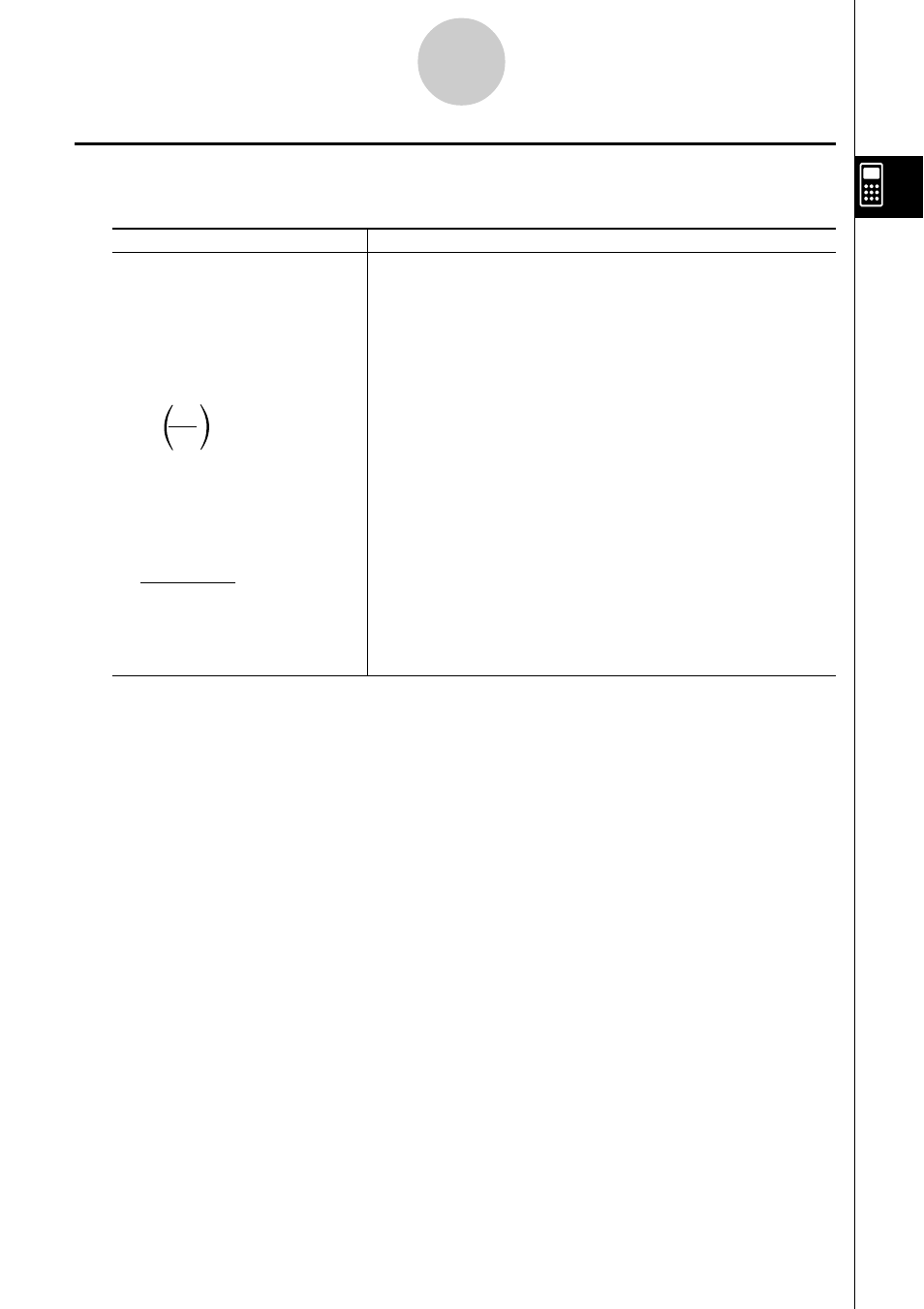K hyperbolische und areafunktionen – Casio FX-9860G Benutzerhandbuch
Seite 87

20050401
k Hyperbolische und Areafunktionen
• Wählen Sie in der Einstellanzeige (SET UP) unbedingt „Comp“ für „Mode“.
Beispiel
Tastenfolge
sinh 3,6 = 18,28545536
K6(g)2(HYP)1(sinh)3.6w
cosh 1,5 – sinh 1,5
K6(g)2(HYP)2(cosh)1.5-
= 0,2231301601
1(sinh)1.5w
=
e
–1,5
(Anzeige: –1,5)
I!-(Ans)w
(Beispiel für cosh
x
± sinh
x
=
e
±x
)
arcosh
20
= 0,7953654612
<Line>
15
K6(g)2(HYP)5(cosh
–1
)(20/15)w
<Math>
K6(g)2(HYP)5(cosh
–1
)$20
c15w
Bestimmung des Wertes für
x
,
wenn tanh
(4
x
) =
0,88 beträgt:
x
=
artanh
0,88
<Line>
4
K6(g)2(HYP)6(tanh
–1
)0.88/4w
= 0,3439419141
<Math>
$K6(g)2(HYP)6(tanh
–1
)0.88
c4w
Hinweis:
Die Notation der Areafunktion lautet
y=arsinh x
oder
y=arcosh x
oder
y=artanh x
, die verkürzte
Taschenrechnernotation ist
y=sinh
–1
x
oder
y=cosh
–1
x
oder
y=tanh
–1
x
und darf nicht mit der
Kehrwertbildung verwechselt werden.
z.B. (
sinh x
)
–1
= 1 /
sinh x
=
sinh
–1
x
in Schriftform und andererseits
(
arsinh x
)
–1
= 1 /
arsinh x
= (
sinh
–1
x
)
–1
≠
sinh x
in verkürzter Taschenrechnernotation!
2-4-6
Funktionsberechnungen